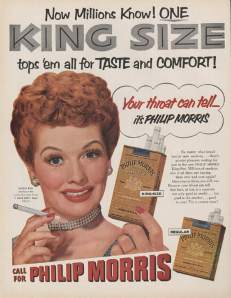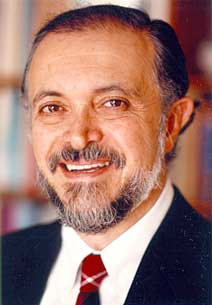On each Monday throughout November, we've discussed diabetes in recognition of Diabetes Awareness Month. We've focused on the personal stories of those diagnosed with type I and type II diabetes, and offered some recipe alternatives for the Thanksgiving holiday.
However, we have yet to talk about the differences between the types of diabetes. Just like the Thanksgiving turkeys that we all enjoyed over the holidays, either baked, smoked or even (bravely) fried, not every diabetes diagnosis is the same.
The terms type I and type II diabetes may be familiar to you, but do you know what they mean? I myself often forget. So today, I thought it might be time for a refresher, and while we're at it, let's discuss gestational diabetes as well.
Type I Diabetes
Type I diabetes, previously referred to as juvenile diabetes, results from your body being unable to produce insulin. Insulin is a hormone released in the body that allows the cells to take in glucose, which provides the cells with energy.
Historically, this type of diabetes is thought to appear in juveniles and young adults, but truly, it may be diagnosed at any age.
The most common treatment to manage type I diabetes is insulin injections. Although the body can't produce insulin itself, by injecting it into the body, cells can use this source of insulin to help to absorb glucose. Other methods of treatment include a pancreas transplant (since the pancreas is the organ that houses the insulin producting Islets of Langerhans cells), or a transplant of the Islets themselves.
Type II Diabetes
Type II diabetes is a metabolic disorder in which either the body doesn't produce enough insulin, or once produced, the body can't use the insulin properly. When insulin is released, it binds to proteins called receptors located on the cell. Once the receptors receive the insulin, the cell can then absorb glucose. In some patients with type II diabetes, the receptors that recognize the produced insulin don't work, so glucose can't enter the cell even though insulin is present.
In this case, the best therapy is attention to lifestyle. Exercise, a healthy diet, and weight loss are the best means by which to decrease the chance of onset of this disease and to control it once it is diagnosed. In doing so, blood sugar levels can be closely controlled.
Further, there are oral medications available that can help to control blood sugar in a variety of ways. This can be through increasing insulin production, making the cells more sensitive to the presence of insulin, or inhibiting the breakdown of starches into glucose.
Gestational Diabetes
Gestational diabetes is more rare, as it is a condition associated with pregnancy. It is diagnosed in ~135,000 pregnant women each year. It appears around gestational week 28 and continues through the pregnancy.
This condition occurs in pregnant women with no prior history of diabetes. During their pregnancy, they experience elevated glucose levels and other diabetic symptoms. It is thought that this is due to the release of hormones that accompany the pregnancy, which act to block the actions of insulin in the woman's body.
Although this condition does not cause birth defects, it can have health consequences for the baby, including an increased risk for type II diabetes later in life.
All of these types of diabetes has one thing in common, the need to control blood glucose (sugar) levels. The following video can explain better than I why sugar is so important to the body.
Final Thoughts
Although diabetes can be well controlled with attention to lifestyle and medication, there is still a need for understanding and acceptance of those diagnosed with this condition. For children, this can be especially important, as those diagnosed at an early age might feel that they are different because they can't have all of the treats that their friends eat, and need to have daily medication to manage their condition. But, those diagnosed are no different from a non-diabetic individual. While they do have certain medical precautions to take, they can still excel at sports, academics, or any other activity that they choose. In general, they can lead a very healthy, normal life.
Further, it is important to understand the hereditary nature of diabetes. Type I diabetes has a strong genetic component, with some environmental influence. Type II has the opposite; a strong environmental factor, but with genetic influence. Those with a family history of type II appear to be more at risk for developing it, given the proper environmental conditions.
According to the American Diabetes Association, nearly 27 million people have been diagnosed with some type of diabetes in the U.S. If not managed, this disease can lead to severe health complications, including loss of vision, amputation of limbs, and kidney failure.
To learn more about diabetes, please visit the American Diabetes Association website.
However, we have yet to talk about the differences between the types of diabetes. Just like the Thanksgiving turkeys that we all enjoyed over the holidays, either baked, smoked or even (bravely) fried, not every diabetes diagnosis is the same.
The terms type I and type II diabetes may be familiar to you, but do you know what they mean? I myself often forget. So today, I thought it might be time for a refresher, and while we're at it, let's discuss gestational diabetes as well.
Type I Diabetes
Type I diabetes, previously referred to as juvenile diabetes, results from your body being unable to produce insulin. Insulin is a hormone released in the body that allows the cells to take in glucose, which provides the cells with energy.
Historically, this type of diabetes is thought to appear in juveniles and young adults, but truly, it may be diagnosed at any age.
The most common treatment to manage type I diabetes is insulin injections. Although the body can't produce insulin itself, by injecting it into the body, cells can use this source of insulin to help to absorb glucose. Other methods of treatment include a pancreas transplant (since the pancreas is the organ that houses the insulin producting Islets of Langerhans cells), or a transplant of the Islets themselves.
Type II Diabetes
Type II diabetes is a metabolic disorder in which either the body doesn't produce enough insulin, or once produced, the body can't use the insulin properly. When insulin is released, it binds to proteins called receptors located on the cell. Once the receptors receive the insulin, the cell can then absorb glucose. In some patients with type II diabetes, the receptors that recognize the produced insulin don't work, so glucose can't enter the cell even though insulin is present.
In this case, the best therapy is attention to lifestyle. Exercise, a healthy diet, and weight loss are the best means by which to decrease the chance of onset of this disease and to control it once it is diagnosed. In doing so, blood sugar levels can be closely controlled.
Further, there are oral medications available that can help to control blood sugar in a variety of ways. This can be through increasing insulin production, making the cells more sensitive to the presence of insulin, or inhibiting the breakdown of starches into glucose.
Gestational Diabetes
Gestational diabetes is more rare, as it is a condition associated with pregnancy. It is diagnosed in ~135,000 pregnant women each year. It appears around gestational week 28 and continues through the pregnancy.
This condition occurs in pregnant women with no prior history of diabetes. During their pregnancy, they experience elevated glucose levels and other diabetic symptoms. It is thought that this is due to the release of hormones that accompany the pregnancy, which act to block the actions of insulin in the woman's body.
Although this condition does not cause birth defects, it can have health consequences for the baby, including an increased risk for type II diabetes later in life.
All of these types of diabetes has one thing in common, the need to control blood glucose (sugar) levels. The following video can explain better than I why sugar is so important to the body.
Final Thoughts
Although diabetes can be well controlled with attention to lifestyle and medication, there is still a need for understanding and acceptance of those diagnosed with this condition. For children, this can be especially important, as those diagnosed at an early age might feel that they are different because they can't have all of the treats that their friends eat, and need to have daily medication to manage their condition. But, those diagnosed are no different from a non-diabetic individual. While they do have certain medical precautions to take, they can still excel at sports, academics, or any other activity that they choose. In general, they can lead a very healthy, normal life.
Further, it is important to understand the hereditary nature of diabetes. Type I diabetes has a strong genetic component, with some environmental influence. Type II has the opposite; a strong environmental factor, but with genetic influence. Those with a family history of type II appear to be more at risk for developing it, given the proper environmental conditions.
According to the American Diabetes Association, nearly 27 million people have been diagnosed with some type of diabetes in the U.S. If not managed, this disease can lead to severe health complications, including loss of vision, amputation of limbs, and kidney failure.
To learn more about diabetes, please visit the American Diabetes Association website.
























